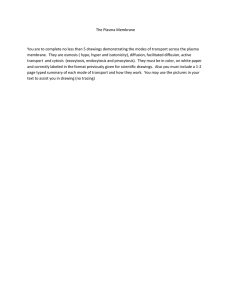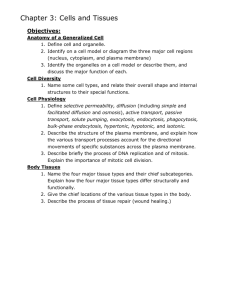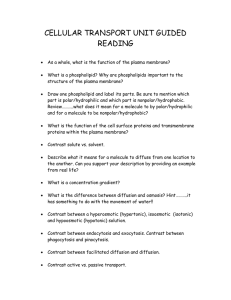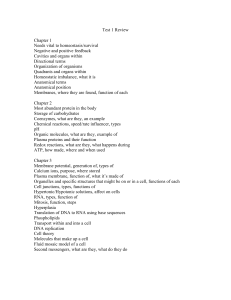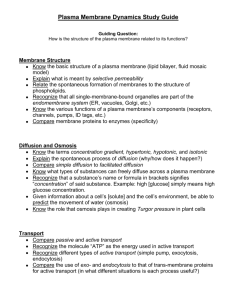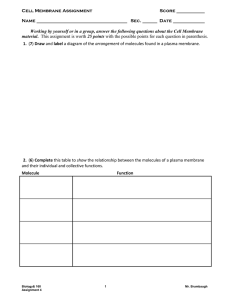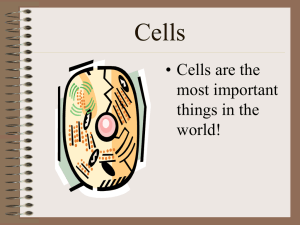Chapter 3: Cells and Tissues
advertisement
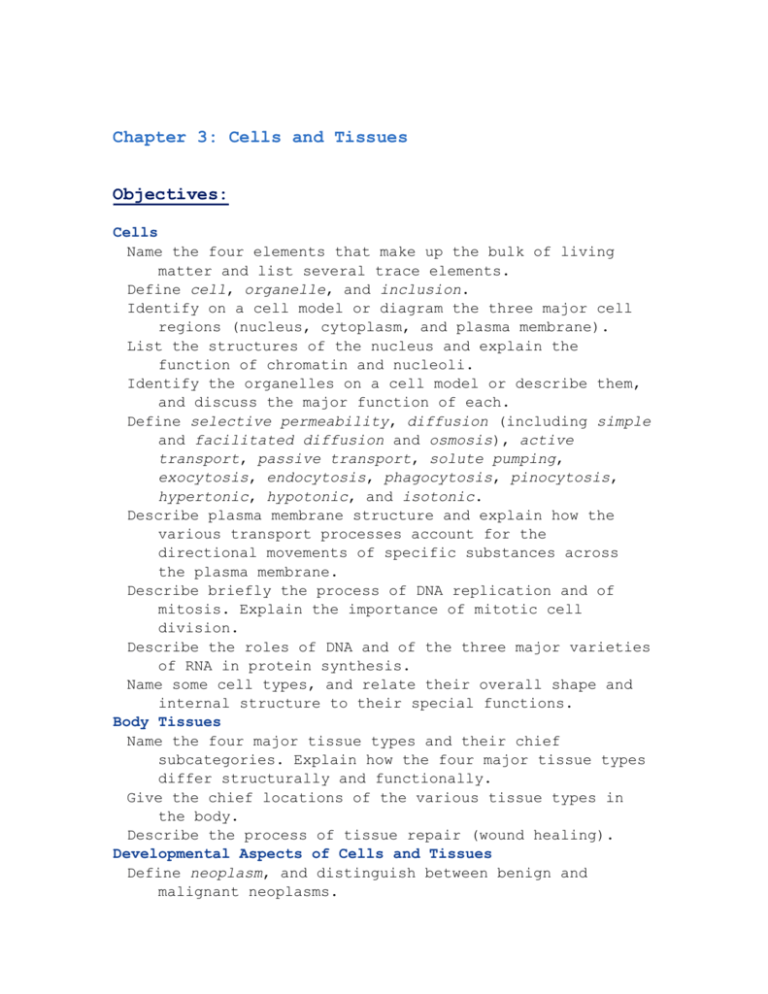
Chapter 3: Cells and Tissues Objectives: Cells Name the four elements that make up the bulk of living matter and list several trace elements. Define cell, organelle, and inclusion. Identify on a cell model or diagram the three major cell regions (nucleus, cytoplasm, and plasma membrane). List the structures of the nucleus and explain the function of chromatin and nucleoli. Identify the organelles on a cell model or describe them, and discuss the major function of each. Define selective permeability, diffusion (including simple and facilitated diffusion and osmosis), active transport, passive transport, solute pumping, exocytosis, endocytosis, phagocytosis, pinocytosis, hypertonic, hypotonic, and isotonic. Describe plasma membrane structure and explain how the various transport processes account for the directional movements of specific substances across the plasma membrane. Describe briefly the process of DNA replication and of mitosis. Explain the importance of mitotic cell division. Describe the roles of DNA and of the three major varieties of RNA in protein synthesis. Name some cell types, and relate their overall shape and internal structure to their special functions. Body Tissues Name the four major tissue types and their chief subcategories. Explain how the four major tissue types differ structurally and functionally. Give the chief locations of the various tissue types in the body. Describe the process of tissue repair (wound healing). Developmental Aspects of Cells and Tissues Define neoplasm, and distinguish between benign and malignant neoplasms. Explain the significance of the fact that some tissue types (muscle and nerve) are largely amitotic after the growth stages are over.

